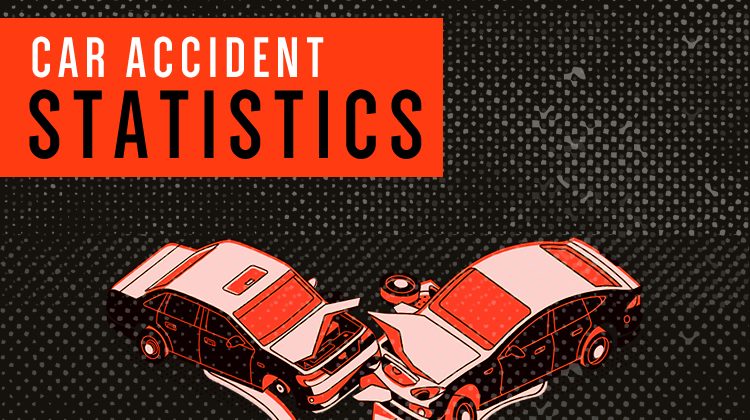According to research by the National Highway Traffic Safety Administration, motor vehicle accidents were the second leading cause of death for children age 3 and 5-14, and the leading cause for children age 4 and 15-20 in the year 2013. These numbers on average represent the deaths of 3 children 14 years old and younger and the injuries of 470 each day in automobile accidents in 2013.
There are many important factors to keeping your children safe in the car, many of which go beyond highway safety, and are behaviors that take place off the road. From securing the best child safety seat and practicing proper seat belt safety, to making sure the car is locked and inaccessible to the child after the destination is reached, to making sure to purchase cars that are the most safe. You already know that your level of driving safety directly contributes to the safety of your children who are in the car, so here are tips to make sure everything else is taken care of in regard to safeguarding your children to the best of your ability!
Seating children in the rear seats rather than in the passenger seat reduces the risk of fatal injury by 75% for children up to age 3, and almost 50% for children aged 4 to 8, according to the Insurance Institute for Highway Safety High Loss Data Institute. You should keep your child in the back seat through age 12 at the least, and keep your child in their car seat for as long as possible, providing they fit the manufacturers requirements of height and weight.
Safest Car Seat by Age:
- Birth-3 years (or maximum height and weight for car seat):
- Children under age 1 should always ride in a rear-facing car seat.
- Keep children in a rear-facing car seat until they reach the top height or weight limit allowed by the car seat’s manufacturer.
- Once the seat is outgrown, the child is ready to be driven in a forward-facing car seat complete with a harness and tether.
- Up to age 7:
- Until the car seat manufacturer’s height and weight limit is reached, keep them in a forward-facing car seat with a harness.
- When the height and weight limits of the forward-facing car seat are reached, move them to a booster seat (in the back seat!!).
- Up to age 12:
- Keep children in a booster seat until they are big enough to properly fit in a seat belt.
- A seat belt fits properly if the lap belt lies snugly across the upper thighs, not the stomach.
- The shoulder belt should lie snug across the shoulder and the chest, not the belt or face.
- Remember that your child should remain in the back seat because it is safer there!
Seat Belt Safety:
- Wearing seat belts is Highway Safety 101. Research conducted by National Highway Traffic Safety Administration from 2004 to 2013 shows that in vehicles where adult drivers are restrained by seat belts, children are more likely to be restrained as well.
- Among fatally injured children ages 5-7, 71% were not wearing seat belts when the drivers weren’t. But when the drivers were wearing seat belts, only 34% in this age group were unrestrained.
- These behaviors hold true in regard to teen driving safety, detailing the importance of teaching your children safe driving precautions at an early age. 80% of people ages 16-24 agreed with the following statement: “I have a habit of wearing a seat belt because my parents insisted I wear them when I was a child.”
Non-Traffic Injury and Fatality Prevention:
- “Non-traffic incidents” = events that take place off public roadways, in driveways, parking lots and garages.
- The most common non-traffic incidents resulting in injury or death of children are backover and frontover accidents, as well as heat stroke.
- The National Highway Traffic Safety Administration reports that 30,000 children 14 years old and younger were injured in non-traffic driving incidents (involving cars) between 2008 and 2011.
- During that time period, over 800 children age 4 and younger were killed in non-traffic automobile accidents.
- Our advice to prevent these incidents is to always remember to “Look and Lock!”
- Locking the car up after taking the children out is the best way to make sure they don’t get back in and hurt themselves, either by accidentally trapping themselves inside and causing overheating, or accidentally (or purposefully) putting the car into gear.
- Before locking your car, check all the seating positions and make sure they are all empty. Make sure to do this through the windows after you’ve gotten up and out of the car, the driver’s seat can provide a difficult view of the rear-facing car seats or into a larger vehicle’s third row.
Choosing a Safe Car for your Family:
- Choosing a car that performs well in safety-crash tests and contributes to overall highway safety is important because the number one factor in the safety of children in the car is the performance of the driver.
- In addition, it’s important to choose a car with features that can help avoid non-traffic accidents and injuries that can harm your children or worse:
- Rearview Cameras and Front Park Assist features: These are must-haves when it comes to preventing front and backover accidents, a leading cause of non-traffic deaths for children. (Rearview cameras are available for purchase usually under $100)
- Auto Reverse on Power Windows and Doors: Although child lock can prevent children from controlling the windows, children can put their hands out while the driver is putting the window up. Auto reverse senses their presence and stops the window from closing, which can help minimize the possible injury.
- Transmission Shift Interlock: This prevents the vehicle from being put in gear without having a foot on the brake, which is difficult for small children to reach.
- Rear-Seat Seat Belt Reminder: Chimes when rear passengers aren’t buckled in. Squirmy kids can and often do undo their seat belts, so this chime or indicator light will serve as a way to constantly monitor and maintain seat belt use.
Interested in further information to help with the selection of your next family car? Consumer Report has recently released their annual report on the safest cars of the year: Safest Cars 2018





No Comment